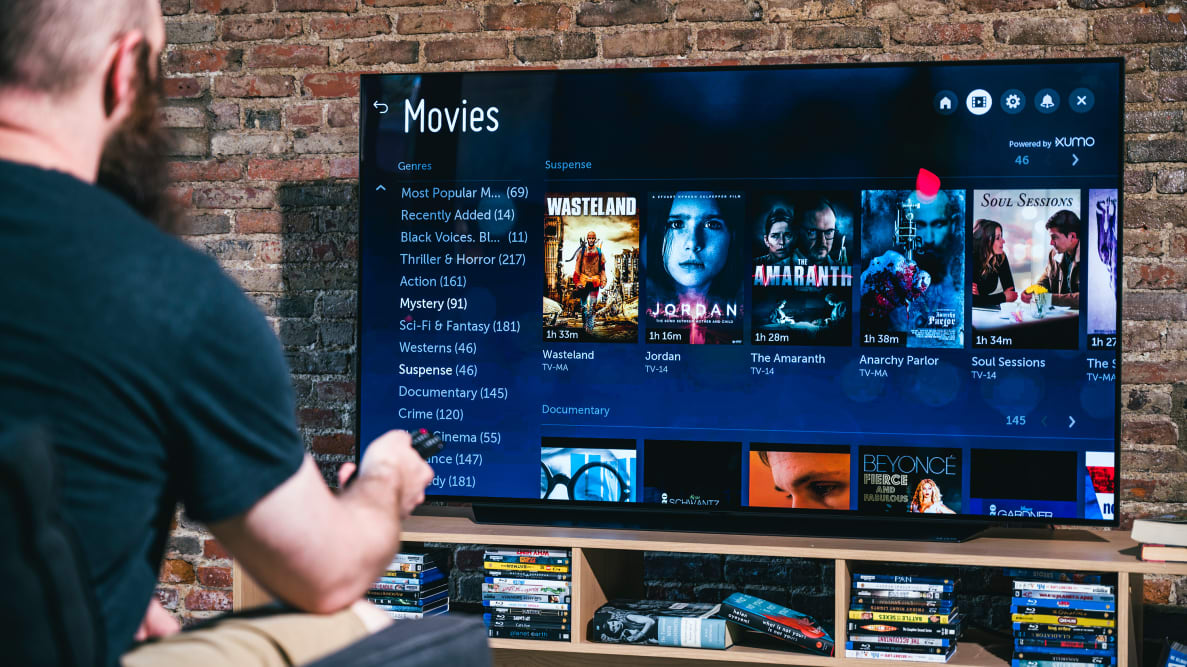Pros
-
Amazing picture quality
-
Future-ready
-
Premium design
Cons
-
Not as bright as competition
For years, LG was the only TV manufacturer making OLED models. While Sony has since jumped into the fray, LG continues to lead the pack when it comes to producing the widest array of OLED options.
The company's CX model is its second-most affordable option in 2020, but despite being much more affordable than a lot of the competition, you're still getting everything that makes OLED great: perfect black levels, vivid emissive colors, and excellent response time for movies and video games.
If you’re looking for a new TV in 2020 that’ll put you right at the front of the pack where the most premium TV tech is concerned, the CX is a fantastic investment. Its HDR performance is stellar, it’s a great pickup for avid gamers, and it features a thin, sleek design that’s sure to turn heads.
(Note: Due to COVID-19 complications, this review leans heavily on test results in lieu of hands-on time with the TV.)
About the LG CX Series OLED TV
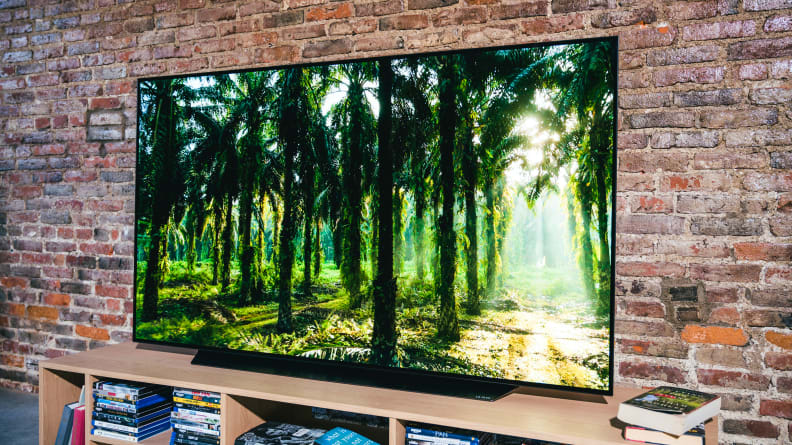
The LG CX series features an understated design and high-quality materials, including an almost bezel-less screen that's as thin as a pencil.
LG's CX series is available in three screen sizes:
- 55-inch (LG OLED55CXPUA), MSRP $1,799
- 65-inch (LG OLED65CXPUA), MSRP $2,799
- 77-inch (LG OLED77CXPUA), MSRP $4,999
Different sizes of TVs in a series tend to perform very similarly to to one another, and this is especially true for OLED TVs. To put it another way, the only really noteworthy difference between the 55-inch LG CX, the 65-inch LG CX, and the 77-inch LG CX is the screen size.
Here's a rundown of what you're getting with the LG CX, regardless of size:
- 4K (3,840 x 2,160) resolution
- Supports High Dynamic Range (HDR10, HLG, Dolby Vision, and Dolby Atmos)
- Native 120 Hz refresh rate
- LG webOS smart platform
- DCI-P3/10-bit color space
- LG ThinQ AI functionality (with Alexa and Google Assistant)
- Third generation a9 processor
- G-Sync compatibility
- FreeSync compatibility
The LG CX ships with the newest iteration of LG’s Magic Remote, which offers motion control in addition to basic remote control functionality. Built into the TV’s software is the newest version of webOS, LG’s smart platform.
Performance Data
Before testing each TV, we make sure the panel is on and receiving a continuous signal for at least 24 hours, allowing the pixels plenty of time to warm up. The LG CX received the standard warm-up time before any readings were taken.

Like all OLED TVs, the LG CX series is insanely thin in depth, measuring about the same as a stack of four credit cards. As you can see, it's thinner than a smartphone!
For SDR tests, we used the LG CX’s “ISF Expert (Bright Room)” picture setting. For HDR tests, we used LG’s “Cinema (HDR)” picture setting. We’ve chosen these settings because of their accuracy, but results may vary across picture modes.
We use a standard ANSI checkerboard pattern for most of our basic contrast tests—including the ones reported below—but we also use white and black windows ranging from 2% to 90% to test how well the contrast holds up while displaying varying degrees of brightness.
I'll expand on our test results throughout the review, but for now, here are some key takeaways:
• HDR contrast (brightness/black level): 249 nits/0.001 nits (ANSI checkerboard) • SDR contrast (brightness/black level): 192.2 nits/0.001 nits (ANSI checkerboard) • HDR peak brightness: 651.9 nits (20% white window) • HDR color gamut coverage: 97% (DCI-P3/10-bit) • SDR color gamut coverage: 100% (Rec.709)
Connectivity
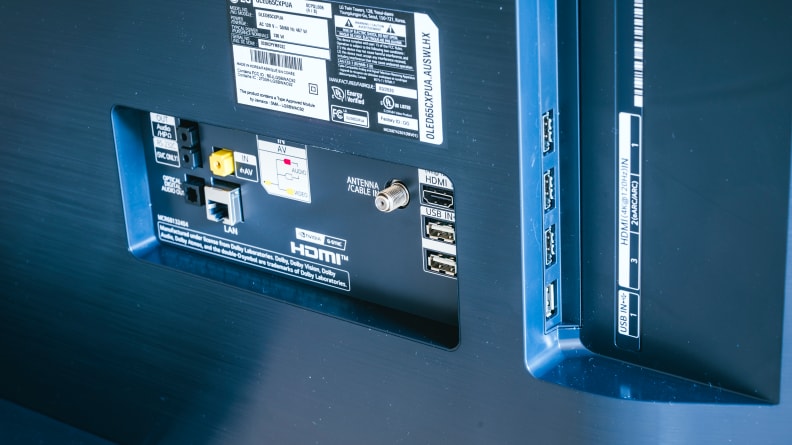
The LG CX series' connectivity options include four HDMI 2.1 inputs, three USB 2.0 ports, LAN (ethernet), optical audio out, and a 3.5mm headphone (aux) jack.
The LG CX is equipped with enough connectivity options to accommodate both casual users and dedicated home theater aficionados. This is partly due to the CX’s inclusion of HDMI 2.1 ports, which will ultimately support features like 4K resolution gaming at 120 Hz.
Here's what you'll find on the back of the LG CX’s panel:
• 4x HDMI 2.1 (1x ARC) ports • 3x USB 2.0 ports • LAN ethernet port, RF input, optical audio output • 3.5mm headphone jack
What We Like
The picture-perfect performance we expect from OLED

The LG CX delivers the same inky, lightless shadows and vivid colors we expect from OLED TVs. As performance goes, we've got no complaints here.
Picture quality is why you buy an OLED TV, and the CX continues to deliver on that reputation. The emissive OLED panels spearheaded by LG (though other companies have since followed suit) maintain a leg up on their LED/LCD competition by what is called "emissive" display technology, wherein each pixel turns on and off by itself, making for huge contrast and rich colors unpolluted by errant backlight rays. The end result? A TV that looks spectacular.
Our lab tests indicate stellar performance across the board—from contrast to color. Regardless of how you plan on using your new TV, you can rest assured that the CX will perform to the highest of standards. According to our test results, the CX covers 100% of the SDR standard color gamut (Rec.709) and about 97% of the HDR color standard (DCI-P3). In practice, this means rich, voluminous color when watching standard content and exceptional color production in HDR.
Since OLED panels are unique in their ability to achieve perfect black levels, the CX’s remarkable color production is bolstered by phenomenal contrast. The result is a sharp, detailed picture free of pesky issues like light bloom, which tends to hinder standard LED/LCD TVs that rely on a backlight.
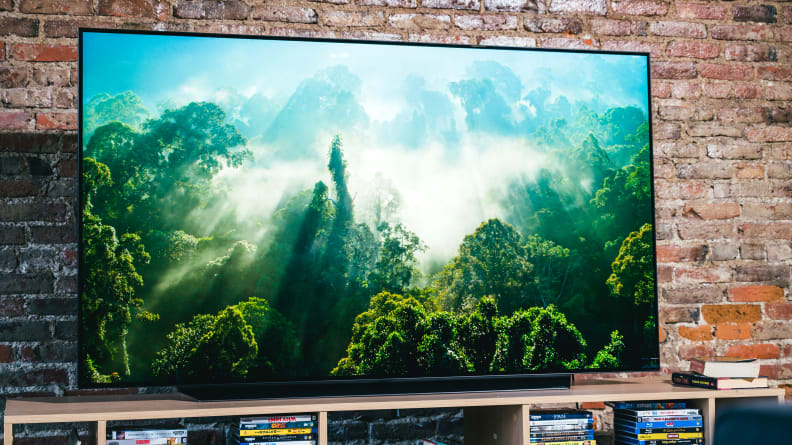
LG's CX OLED looks rather gorgeous, whether you're watching standard (SDR) content or something in HDR+ or Dolby Vision.
If you haven't seen an OLED TV before, let us just reassure you that the picture quality is the reason to buy. While LED (LCD) TVs have come a long way in recent years, OLED TVs are still jaw-dropping to behold, especially if you haven't seen one before.
Excellent motion handling for gamers and sports fans
When it comes to motion performance, a TV’s native refresh rate is the biggest contributing factor in its ability to display smooth, judder-free motion. The LG CX, fortunately, features a native refresh rate of 120 Hz—the best a TV can currently support. Essentially, this means that the picture refreshes 120 times per second—twice the rate of many TVs you'll come across.
If you watch a fair amount of fast-paced content (sports in particular), specs like this make a considerable difference. But avid gamers are perhaps the biggest beneficiaries here: There’s nothing quite like gaming on a TV with superb motion handling, and the CX’s 120 Hz refresh rate (coupled with the TV’s “OLED motion” and motion enhancement software) are sure to foster excellent gaming experiences.
The LG CX is ready for the future

Being an ultra-premium kind of TV, the LG CX series comes equipped with all the latest in TV tech: HDMI 2.1 inputs, HDR10/Dolby Vision/Dolby Atmos compatibility, and more.
When face-to-face with a dazzling, 65-inch OLED display, the last thing you might be thinking about is the TV’s various connectivity ports. The LG CX, however, is hiding one of its most noteworthy hardware features in plain sight: its HDMI 2.1 ports.
The current HDMI standard, HDMI 2.0, supports a 4K picture at 60 FPS (Frames Per Second) or an 8K picture at 30 FPS. HDMI 2.1, on the other hand, supports 4K resolution at 120 FPS, 8K resolution at 60 FPS, and will ultimately support 10K resolution (if and when the industry happens to reach that point). You can read all about the benefits of HDMI 2.1, but for the purposes of this review, all you need to know is that the LG CX is built for the future.
That said, without any notable way to find 8K content (let alone 10K), HDMI 2.1 is not a feature most people will need to concern themselves with for at least a few more years. It's worth noting, however, that HDMI 2.1 may be the difference-maker when it comes to new features on the Xbox Series X and the PlayStation 5, such as variable refresh rate. If you're planning to upgrade your gaming system in the next year or so, you'll be happy to have the LG CX in your living room.
The CX also supports HDMI eARC which should allow for passthrough of uncompressed audio signals, including Dolby TrueHD for high-resolution Dolby Atmos. Some users have reported issues when passing through uncompressed audio from Blu-ray players and Xbox consoles, but according to LG, updating the TV's firmware to the latest version (3.00.70) should address these issues.
What We Don't Like
Like most OLED TVs, the CX’s brightness is limited
Despite the CX’s predictably impressive contrast, folks expecting a blazingly bright picture ought to consider any number of quantum-dot-equipped TVs before settling on the LG CX. While the CX does produce one of the best pictures money can buy, its peak brightness levels pale in comparison to high-end QLED TVs that occupy the same price bracket.
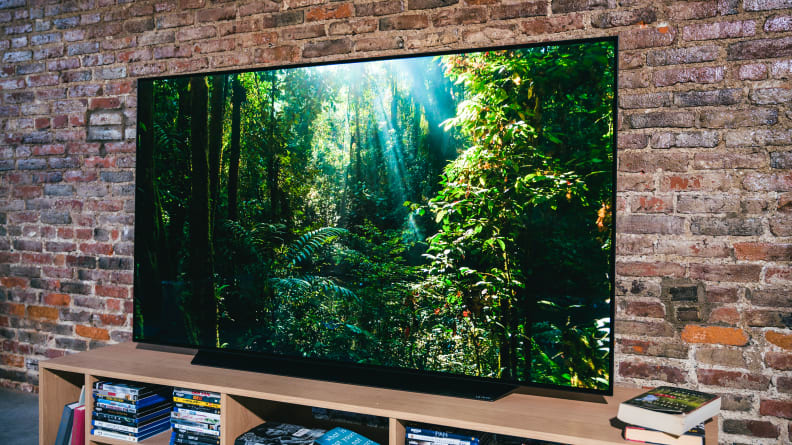
The CX still gets plenty bright (averaging around 300 nits in SDR, and around 700 in HDR), but is not nearly as bright as some of the year's quantum dot-equipped LED TVs, which range above 2,000 nits.
The tradeoff, of course, is the CX’s ability to achieve perfect black levels, which go a long way in elevating the brighter elements of the picture. A brighter, LED TV—like a premium QLED model—won’t come close to the inky black shadows found on a TV like the LG CX, but it will get much brighter. In fact, we routinely test QLED TVs that climb as high as 1,200 nits of peak brightness—nearly twice as bright as the CX.
OLED TVs are still quite pricey
Although they’re widely considered to be the best of the best in TV technology, OLED TVs are still prohibitively expensive for most folks. Of course, you do get what you pay for—in terms of performance, the LG CX is among the best TVs money can buy.
At the time I’m writing this, we still haven’t tested the LG BX—another 2020 OLED TV from LG that carries a lighter price tag—but we can confidently say that it’ll perform similarly to the CX given the hardware. If you’re determined to invest in a more affordable OLED TV this year, the LG BX might be worth a look.
Should You Buy It?
Yes—unless you have a very bright living room
The LG CX isn’t the best OLED we’ve ever tested, but because it’s an OLED TV, it still sits among the best TVs you can buy in 2020. It might not get as bright as some of the higher-end quantum dot TVs we’ve tested as of late, but its perfect black levels and sensational color production make for a better overall picture than what most of those brighter TVs offer.
If your living room gets a generous amount of natural light, you might want to take a gander at some of those brighter quantum dot TVs before shelling out for the LG CX. Additionally, if you’re committed to investing in an OLED TV but want to save as much money as possible, you might want to look into the previously mentined BX model (review coming soon) or the long line of 2019 LG OLED TVs, which are likely to be discounted. The LG C9 is a great place to start your search, but we'll also be reviewing the 2020 BX OLED series (a step down from this model), which should bear slightly friendlier prices.
Still, the LG CX is a fantastic (albeit pricey) OLED TV, and with the addition of future-proofing tech like its HDMI 2.1 capabilities, it will serve you well for years to come.
Meet the testers
Michael Desjardin graduated from Emerson College after having studied media production and screenwriting. He specializes in tech for Reviewed, but also loves film criticism, weird ambient music, cooking, and food in general.
Julia is the Senior Scientist at Reviewed, which means that she oversees (and continually updates) the testing of products in Reviewed's core categories such as televisions, washing machines, refrigerators, and more. She also determines the testing methods and standards for Reviewed's "The Best Right Now" articles.
Checking our work.
Our team is here to help you buy the best stuff and love what you own. Our writers, editors, and experts obsess over the products we cover to make sure you're confident and satisfied. Have a different opinion about something we recommend? Email us and we'll compare notes.
Shoot us an email

